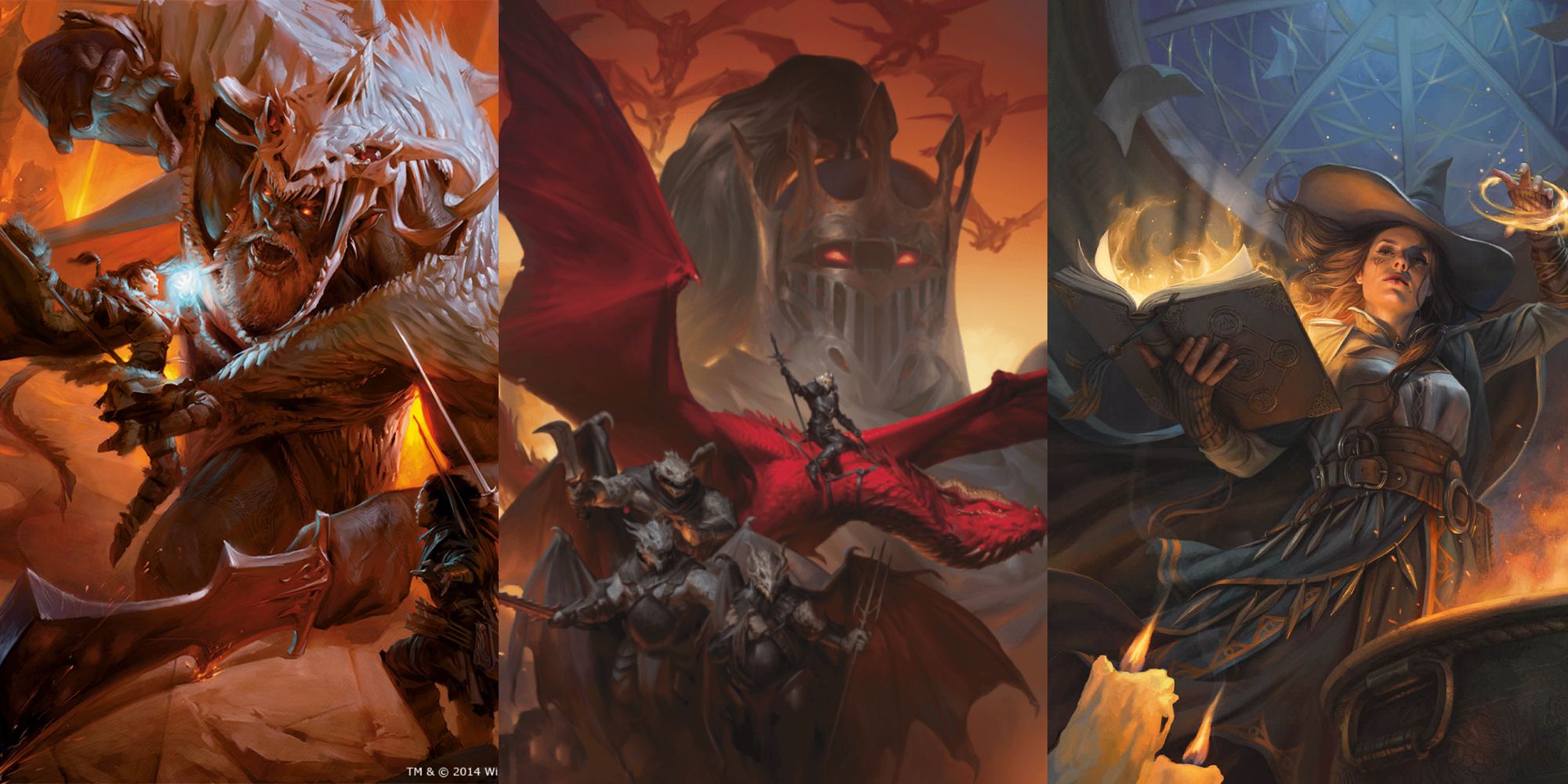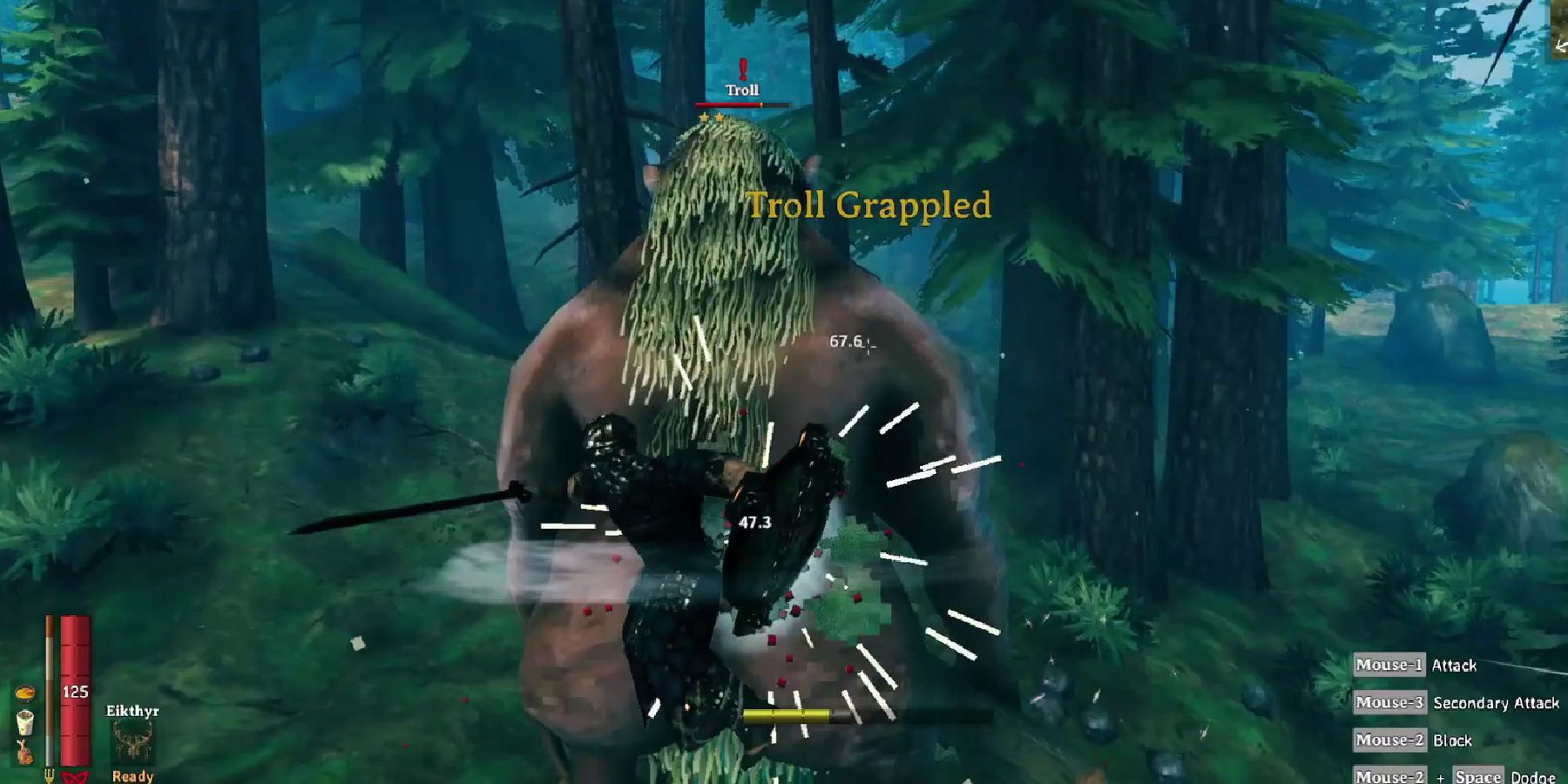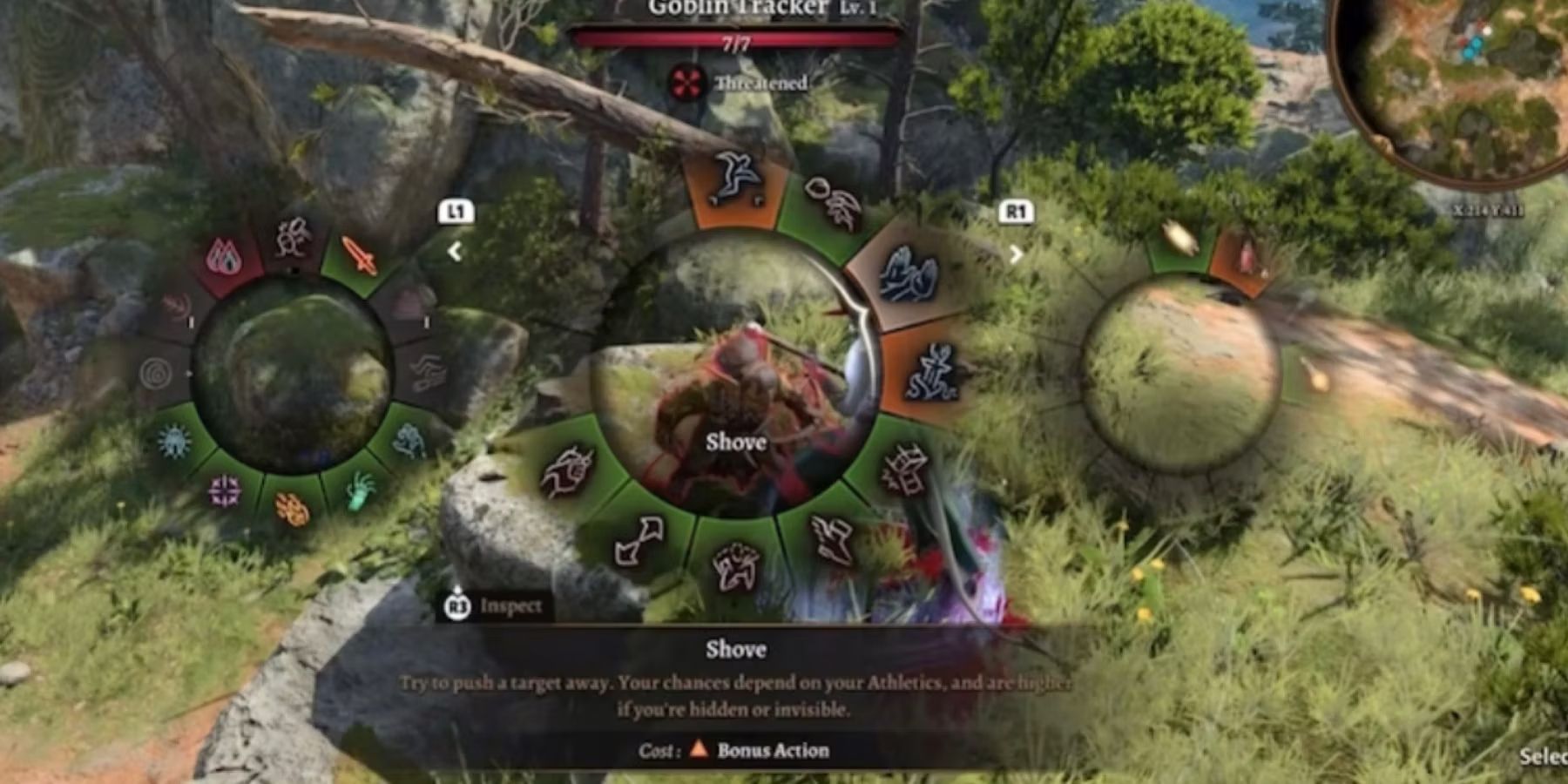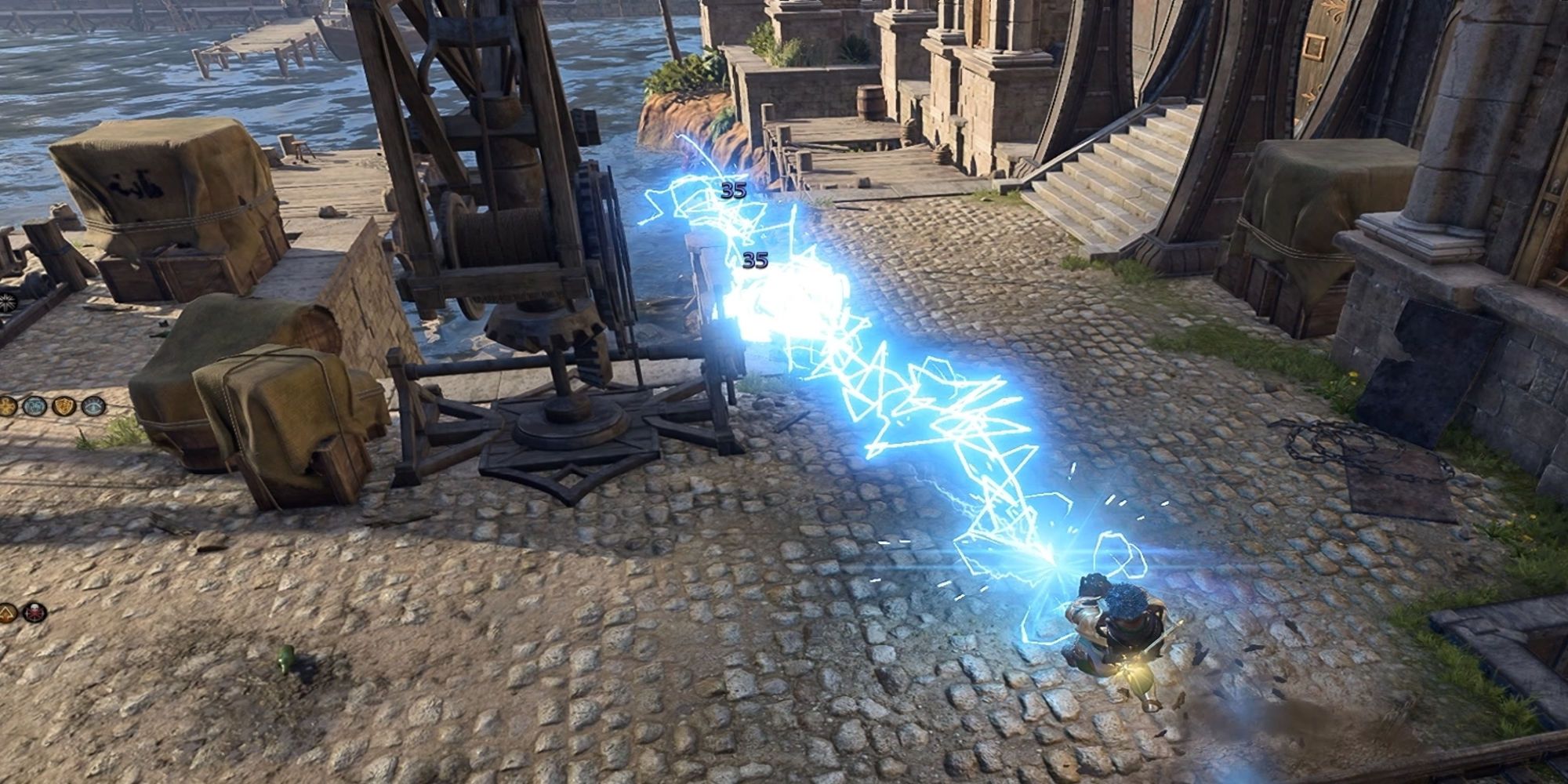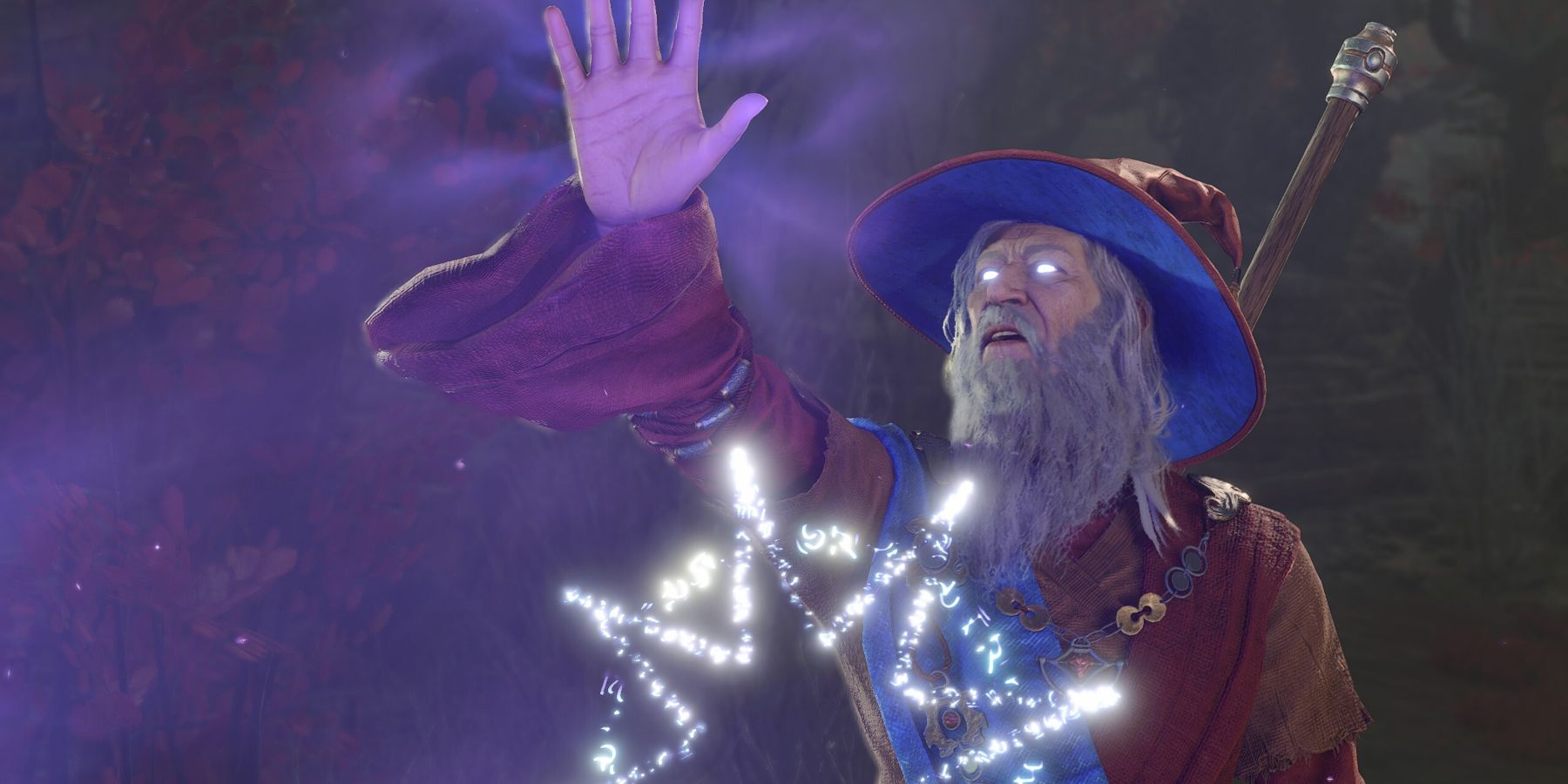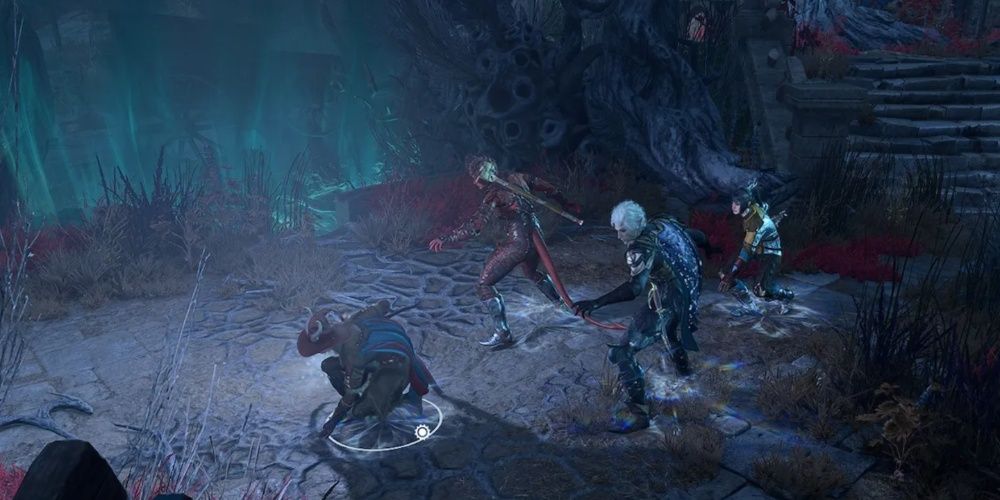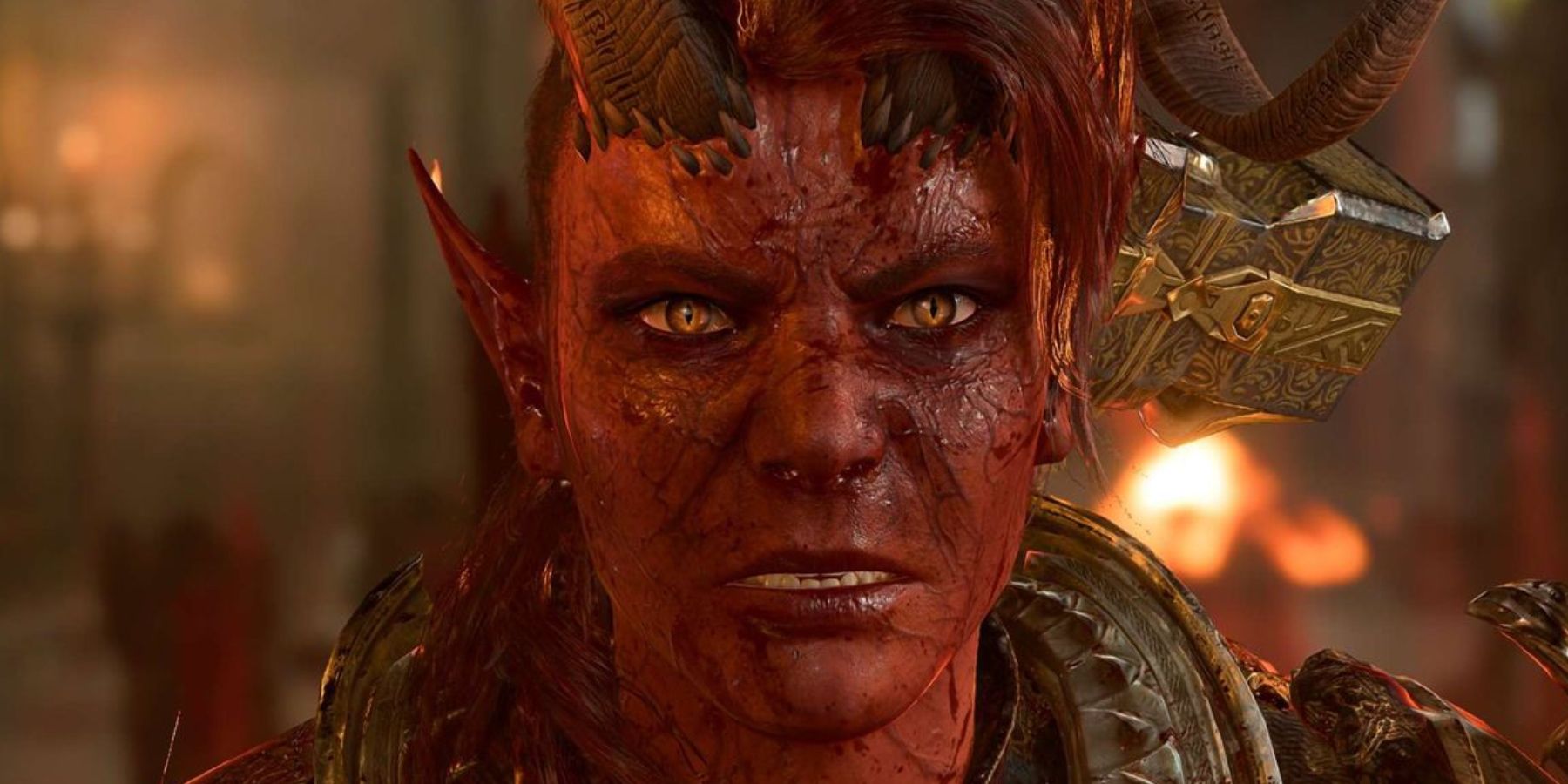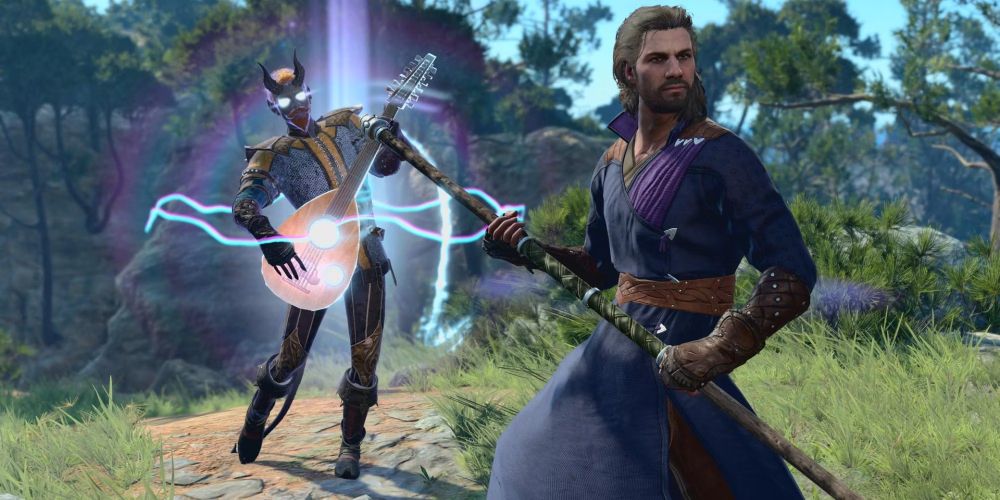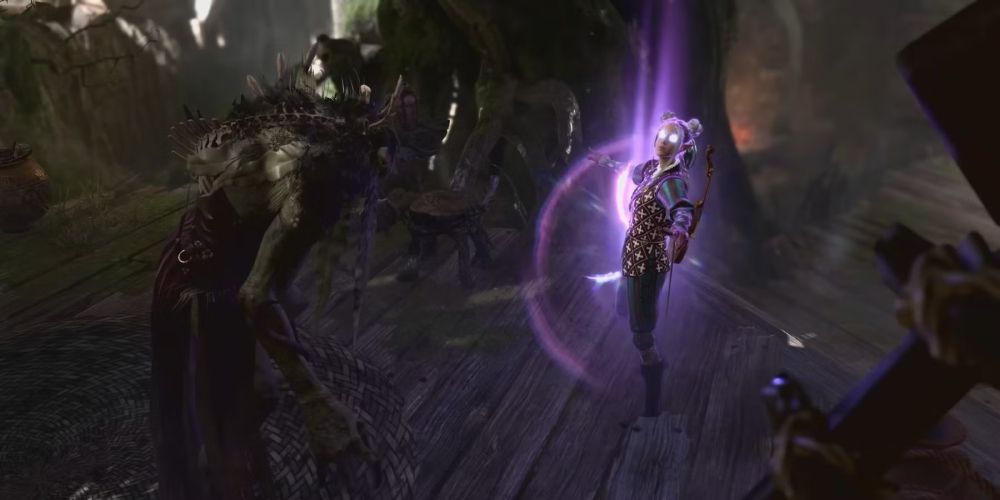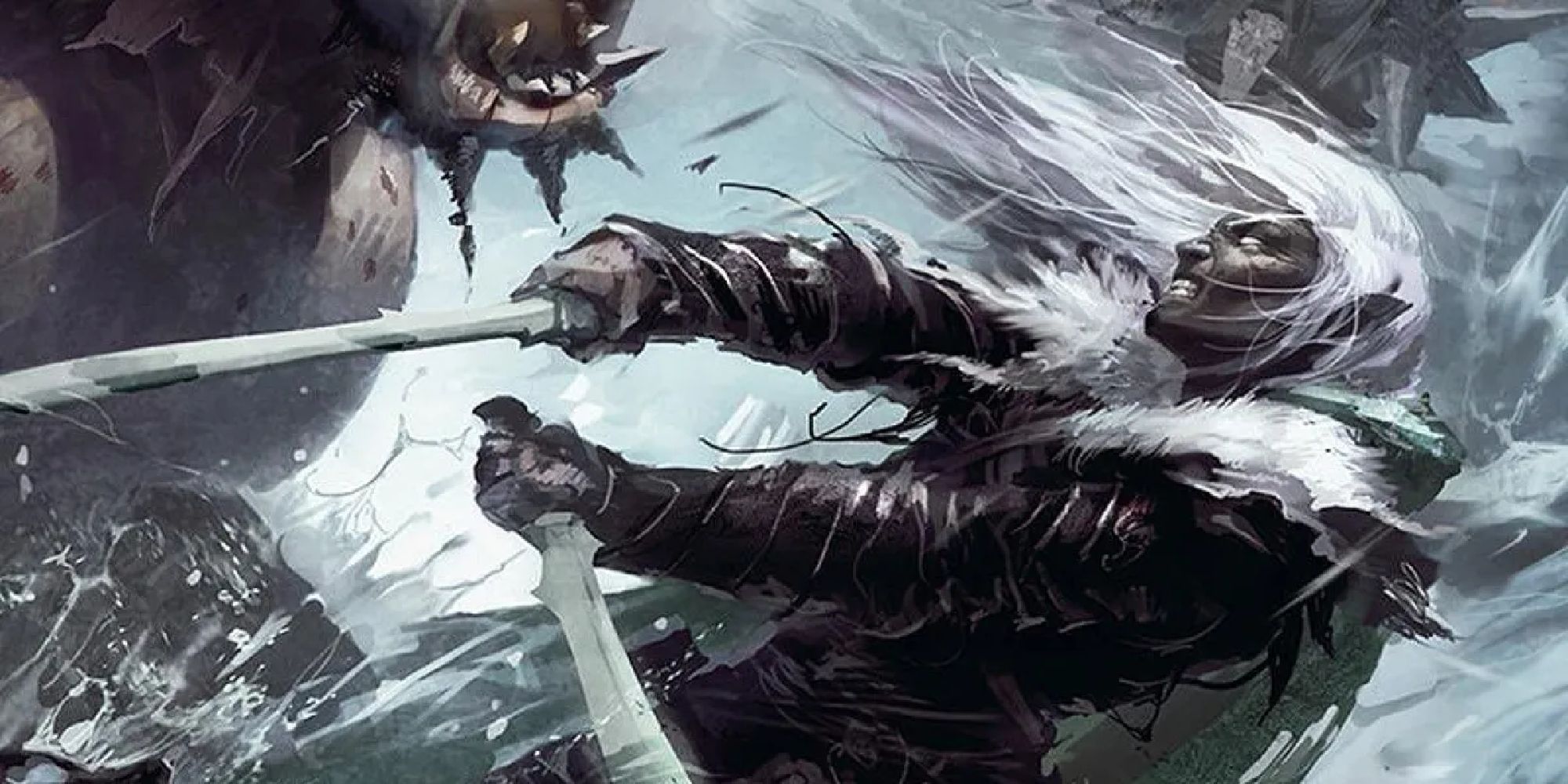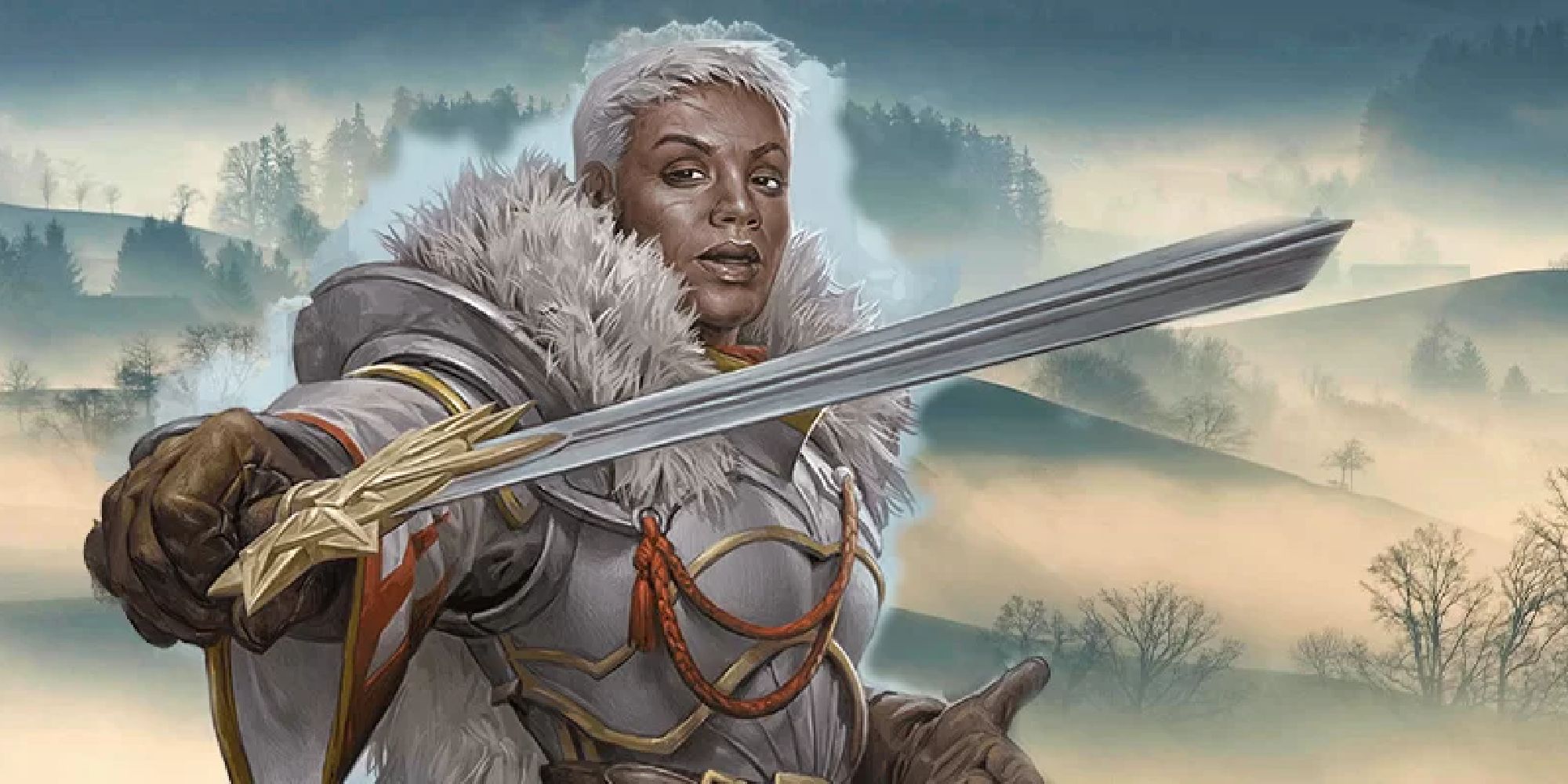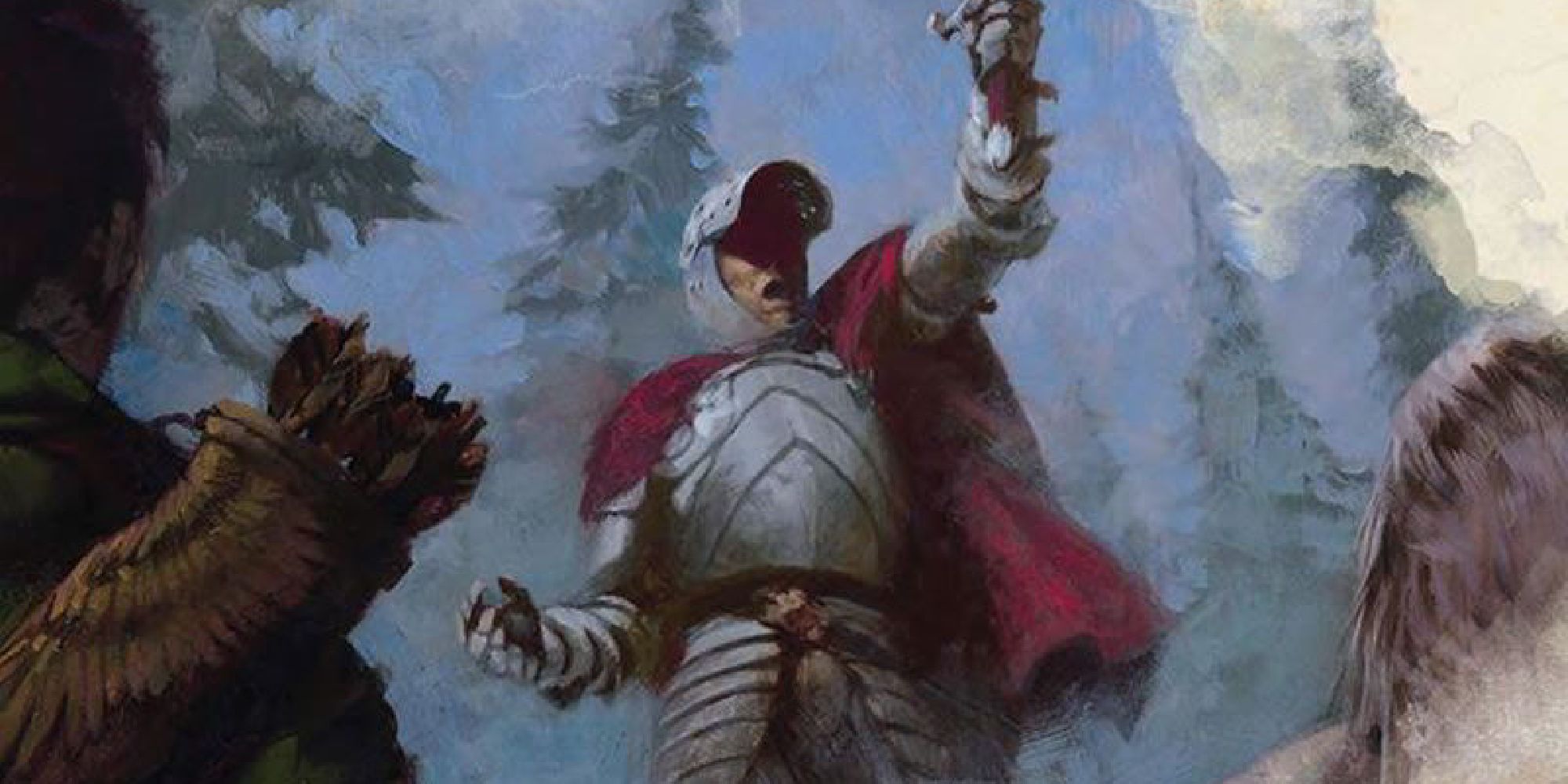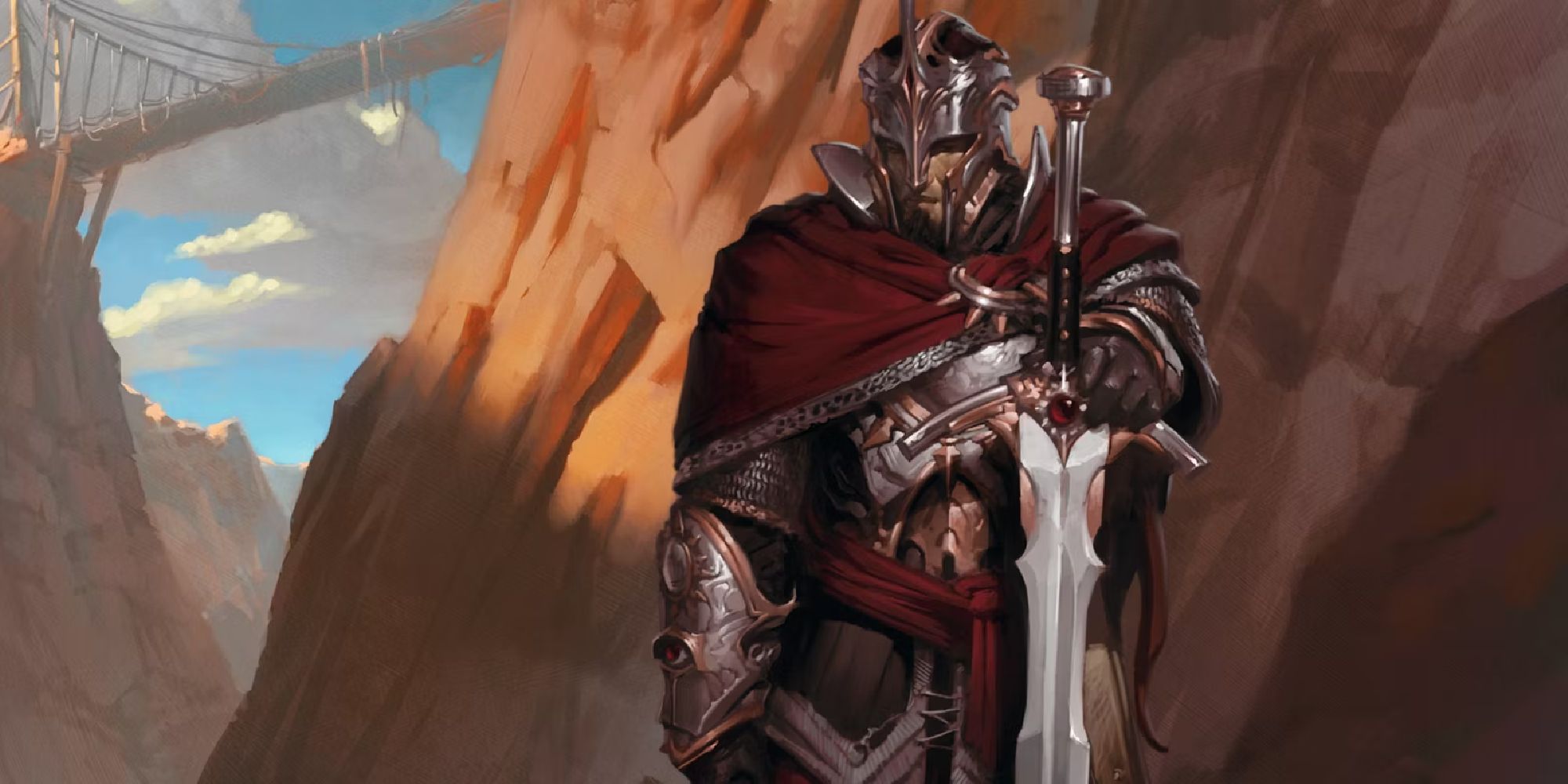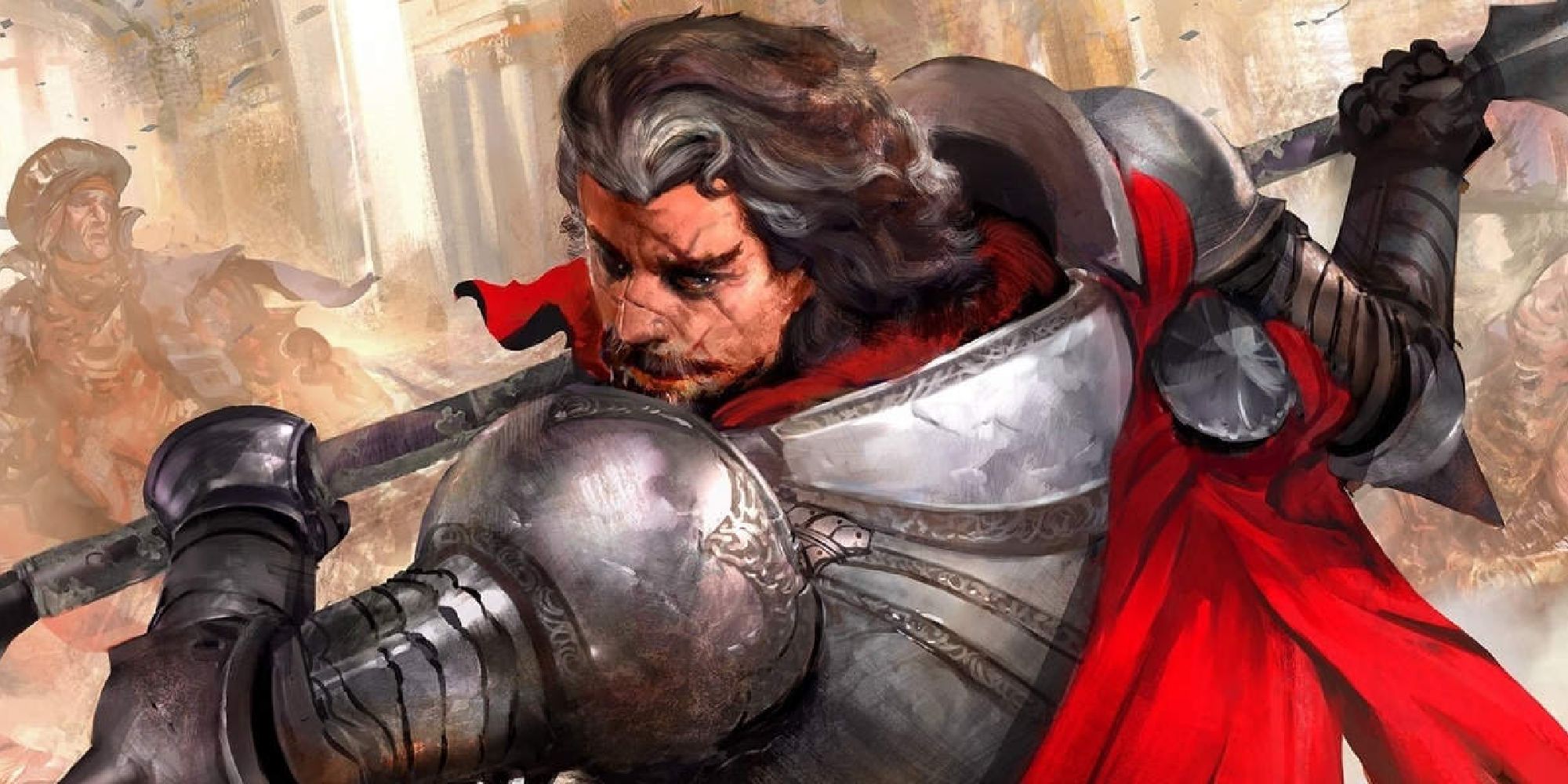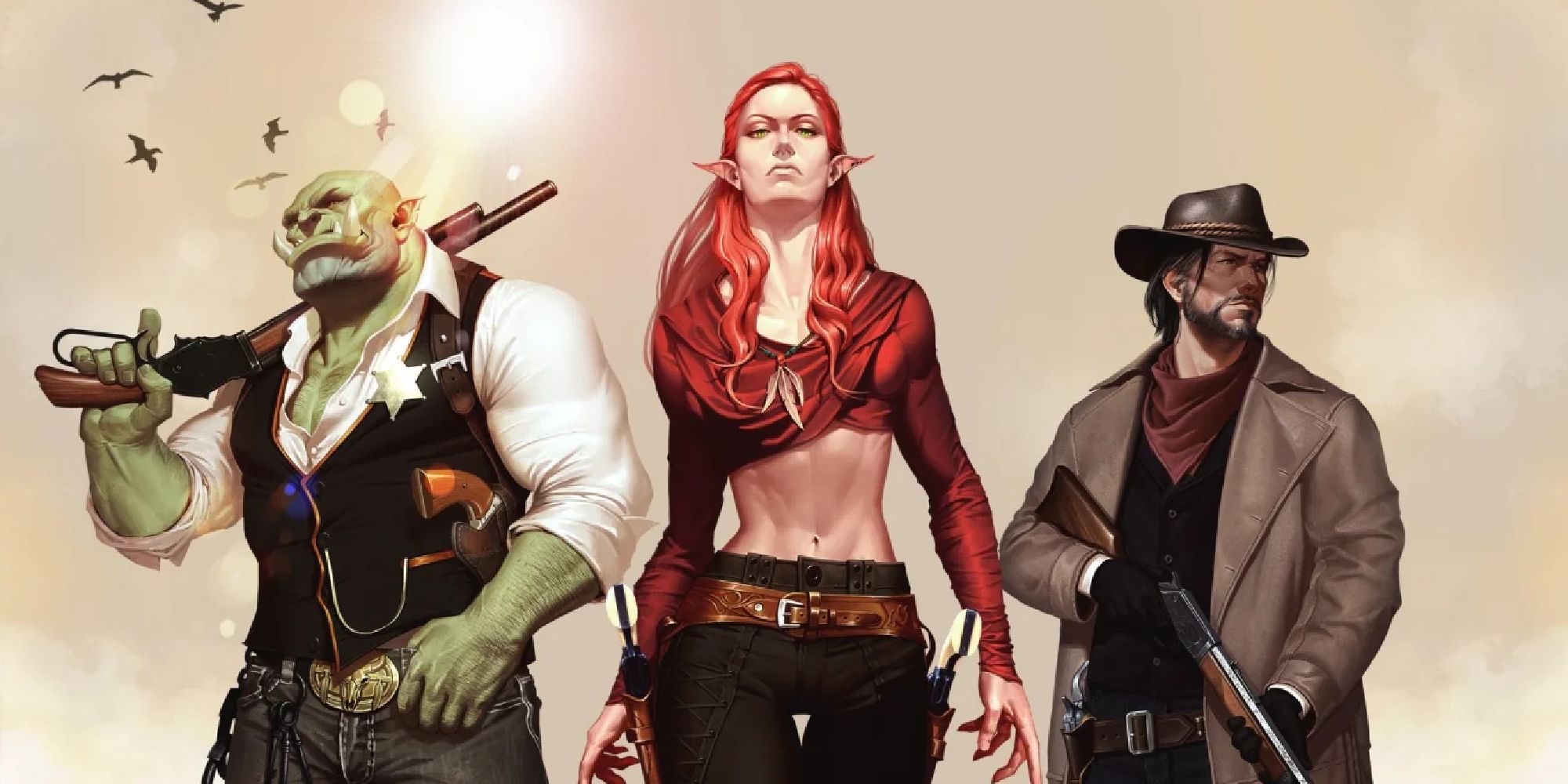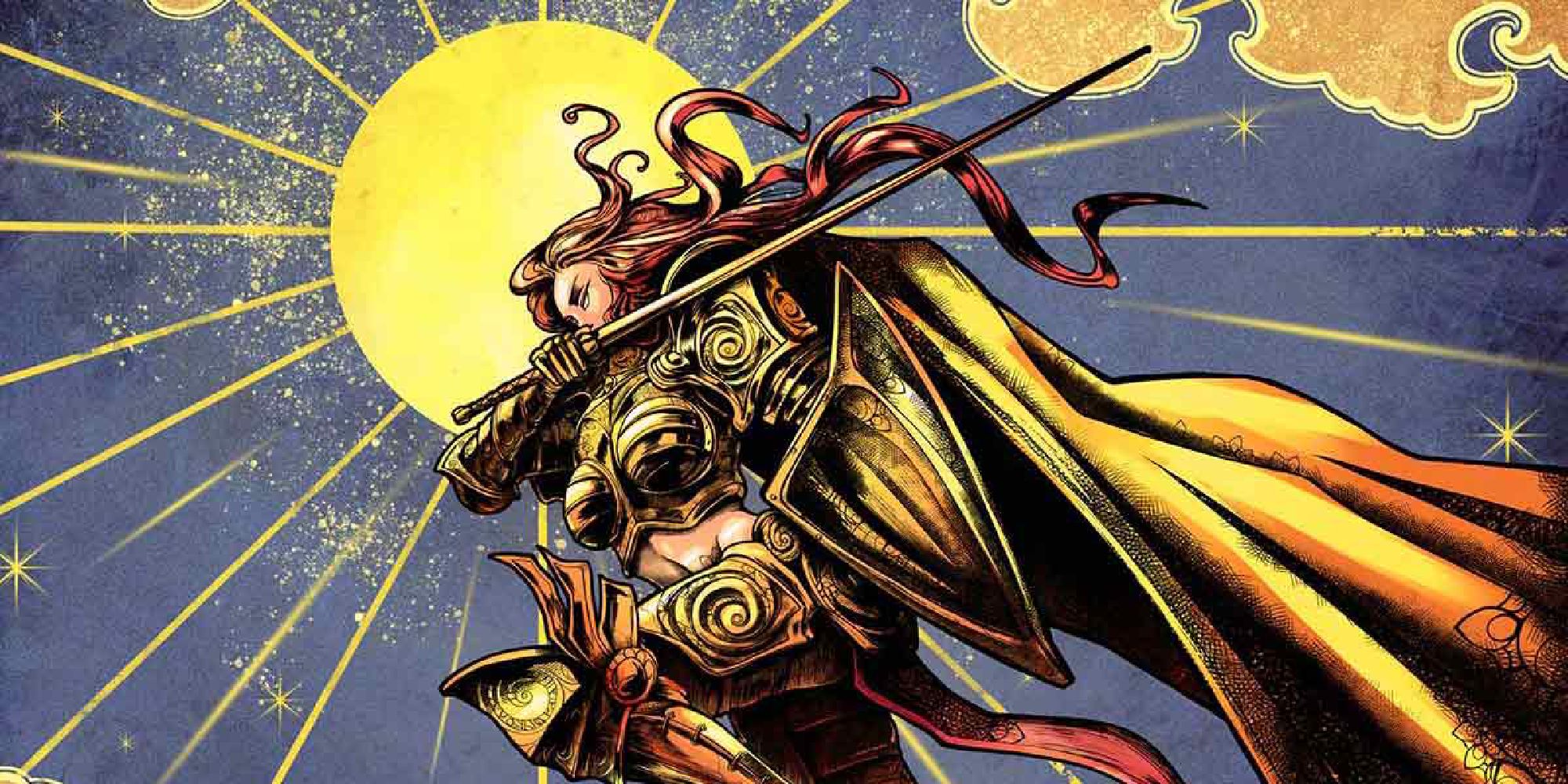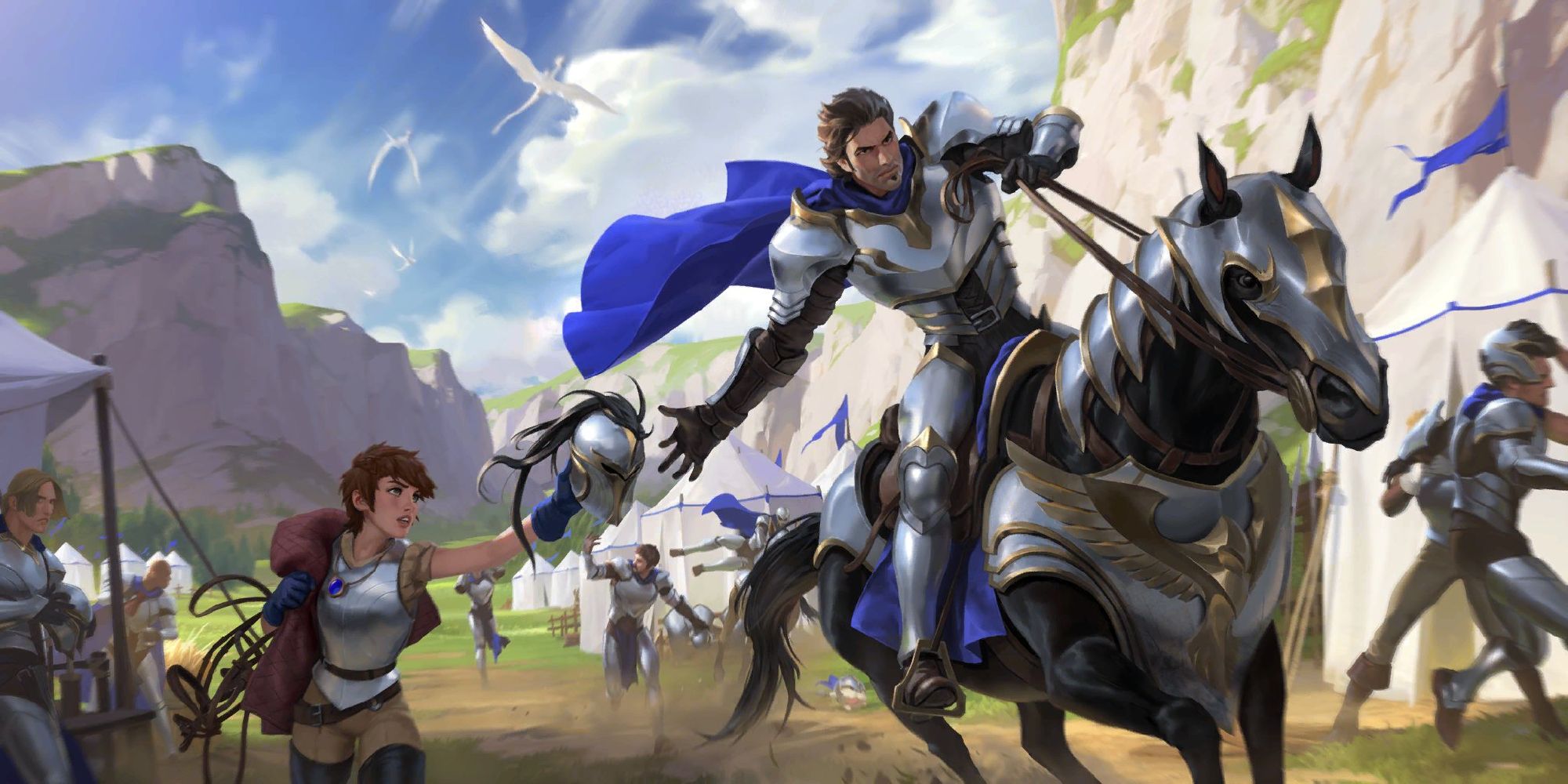Highlights
- D&D players should carefully consider stats, subclasses, and feats when creating a character for optimal gameplay.
- Feats like Alert, Charger, and Great Weapon Master enhance a Fighter's combat abilities in unique ways.
- Choosing feats like Sentinel or Gunner can provide Fighters with strategic advantages in different combat scenarios.
Dungeons & Dragons is primarily a co-operative fantasy story-telling game that encourages players to put thought into creating a layered, complex, and individual character. However, the mechanical side of D&D cannot be neglected. Stats, subclasses, racial bonuses, and choosing an ASI or a feat all must be taken into consideration during character creation or leveling up.
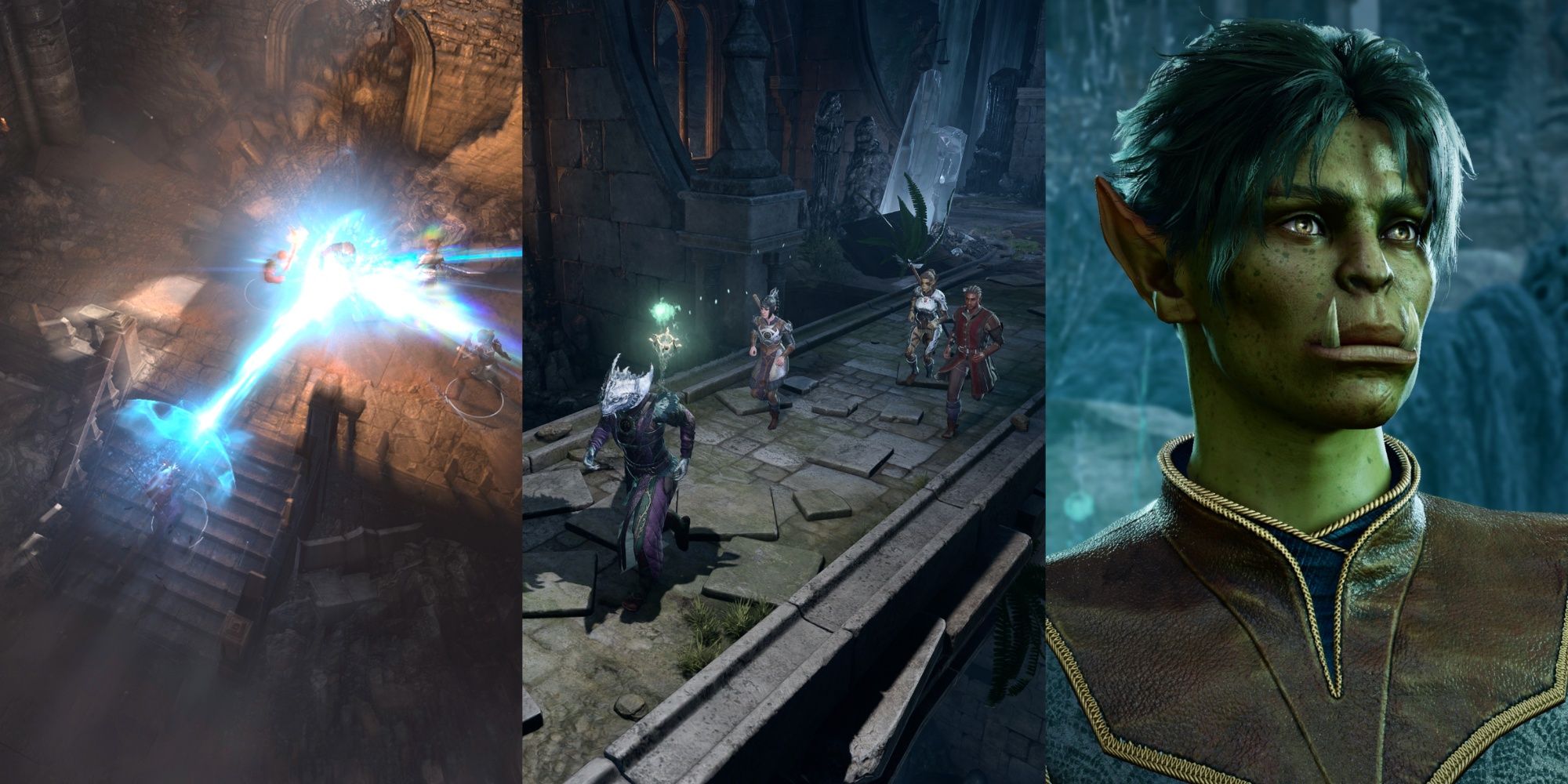
Baldur's Gate 3: Missing Feats From Dungeons & Dragons That Should Be Added
Baldur's Gate 3 includes plenty of feats from D&D, but there are still a few significant ones missing. Here are the best feats that missed out.
Feats are bonuses that players can opt to take instead of boosting their ability scores at certain levels. Often, they are situational, which can render them nonfunctional under certain circumstances but extremely powerful under different ones. Knowing which ones to take can often be difficult, with there being so many options in the current state of D&D. For characters who have chosen the Fighter class, though, it's hard to go wrong with these Feats.
Updated on June 27, 2024, by Mara Cowley: New D&D supplement books are to soon be released to give Dungeons and Dragons 5e some fine-tuning. But until those books release, players will have to make do with the current supplement books, which contain a multitude of character creation options, including feats. Feats are chosen in the place of ability score upgrades, but they can also be awarded by DMs at their discretion, which can result in players taking multiple feats throughout one campaign. It could still be difficult to know which feats to take, but that's why this article was created, to list the best D&D feats for Fighters. As such, even more have been added to this list to highlight more of the best Fighter feats and provide players with more options.
17 Grappler
Become More Adept At Wrestling Opponents
- The character has advantage on attack rolls against a creature they are grappling.
- Players can expend an action to try to pin the grappled creature. To do so, they must make another grapple check. If they succeed, the target is restrained until the grapple ends.
Grappling is one of the many conditions in D&D that can be afflicted on or by player characters. Grappled reduces a creature's movement speed to 0, and as such, the grappled target will not benefit from any bonus to its speed. They can, however, still attack, and they can even be attacked by the creature that has grappled it.
Fighting in close quarters like this is something Fighters are best at, and they can make full use of such scenarios by taking the Grappler feat. Players can restrain the one they are grappling, but more excitingly, they gain an advantage on all attack rolls they make against them to defeat their enemies before they are defeated. This can easily turn the tides of combat into their favor.
16 Athlete
Rival The Prowess Of Olympic Athletes
- When the character is prone, standing up uses only 5 feet of movement.
- Climbing doesn't cost extra movement.
- Players can make a running long jump or a running high jump after moving only 5 feet on foot, rather than 10 feet.
Fighters are one of the most athletic classes in all of Dungeons and Dragons, adept at fighting and having more moves in their arsenals than others.
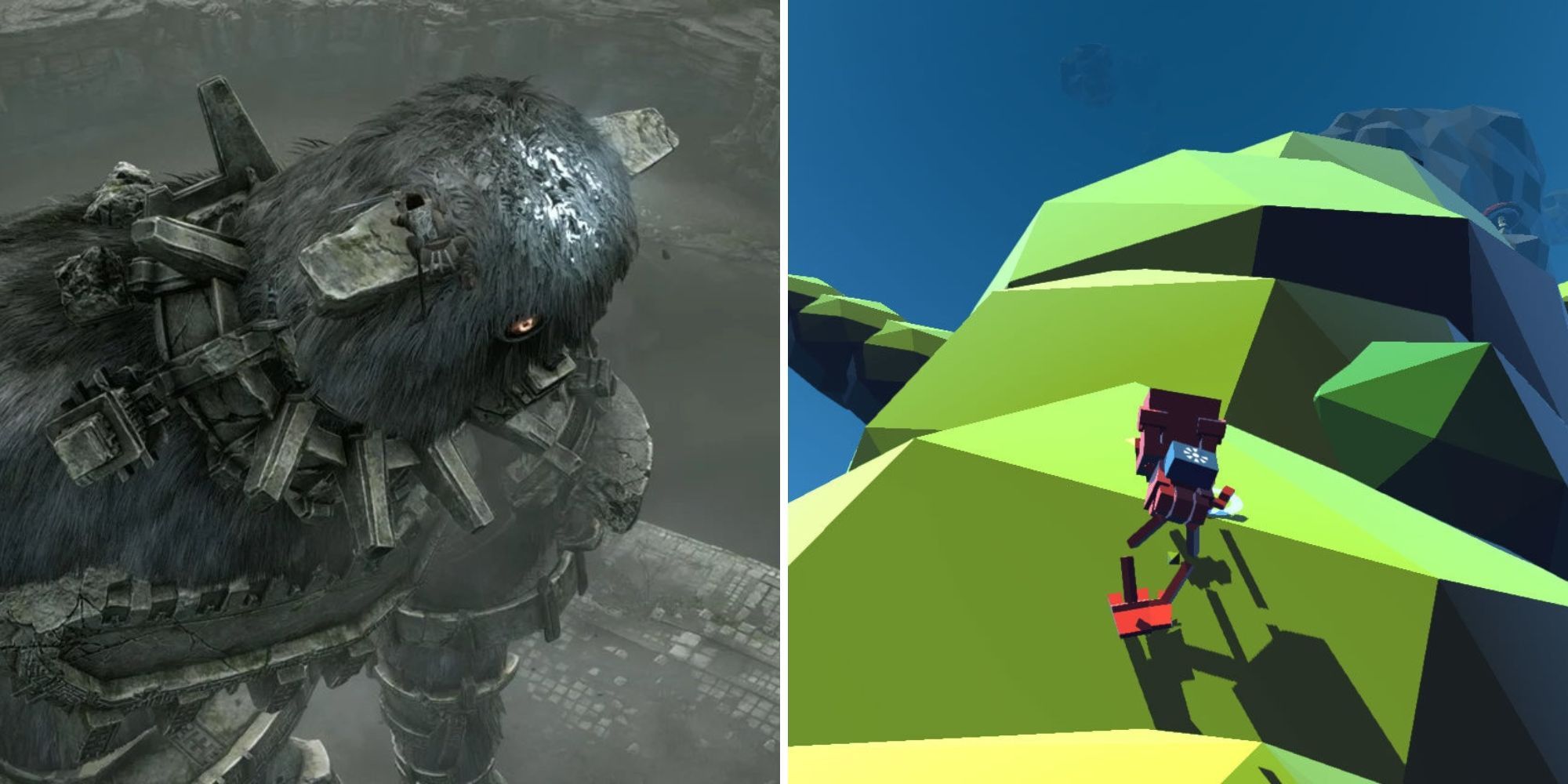
Most Satisfying Climbing Mechanics In Video Games
Climbing mechanics can be a tricky thing to pull off successfully in a video game. These titles, however, nailed it.
Athlete can take a Fighter's athleticism to another level, raising their Strength or Dexterity score, allowing them to stand and even make jumps using less movement. This extra mobility can have uses both inside combat as they don't need to use their whole turn just reaching their foes, and outside of combat for quicker exploration, or escaping from tense situations.
15 Soul Of The Storm Giant
Call Upon The Power Of Storms For Aid In Battle
- Ability Score Increase: Increase Strength, Wisdom, or Charisma by 1 (to a maximum of 20).
- Maelstrom Aura: As a bonus action, the player is surrounded with an aura of magical wind and lightning that extends 10 feet in every direction but not through total cover. While the aura, the player gains the following:
- Resistance to lightning and thunder damage.
- Attack rolls against the player have disadvantage,
- Whenever another creature starts its turn within the aura, they can force the creature to make a Strength saving throw (DC equals 8 + proficiency bonus + the modifier of the ability increased by this feat). On a failed save, the creature's speed is halved until the start of its next turn.
Despite being a primarily weapon-focused class, Fighters are not completely against using magic, as they have access to an entire subclass dedicated to swinging spells. For those that opt for that subclass (or even those who don't but want an injection of magic in their build), the Soul Of The Storm Giant feat will be perfect for them.
Upon taking this feat, players can up their Strength, Wisdom, or Charisma by one, so it can fit a myriad of builds. They can also surround themselves with a 10-foot wind and lightening spell by expending a bonus action. Attacks made against the player during this have disadvantage. On top of that, an opponent's speed will be halved if they fail their Strength saving throw, preventing them from fleeing.
14 Cohort Of Chaos
Causes A Random Magic Effect On A Critical Roll
D&D is all about rolling dice to see if players succeed or fail, with the d20 being the most important dice in the whole game. Rolling a 1 is always treated as a fail, and a 20 a success, but if players roll either of these numbers with the Cohort of Chaos feat, a randomly determined magical effect will take place, based on a d4 table:
- Battle Fury - A creature of choice that the player can see is filled with reckless fury. It has advantage on attack rolls and disadvantage on ability checks.
- Disruption Field - Every creature that starts its turn within 5 feet of the player or moves into that area for the first time on a turn takes 1d8 force damage.
- Unbound - When the player moves, they can use some or all of their walking speed to teleport once to an unoccupied space in sight (along with all equipment) up to the distance used.
- Wailing Winds - Winds swirl in a 15-foot-radius sphere centered on the player. They and any other creatures in that area have disadvantage on Wisdom saving throws.
All of these have their advantages and drawbacks, but they will certainly add some fun and variety to gameplay beyond Fighters just swinging their weapon at whatever enemy is in range.
13 Alert
Become Immune To Surprise
- Players gain a +5 bonus to initiative.
- Can't be surprised while conscious.
- Other creatures don't gain advantage on attack rolls.
D&D players aren't the only ones who try to sneak up on their foes to gain a surprise round - sometimes, a crafty DM will pull the same trick on their unsuspecting players, immediately placing them at a disadvantage in combat.

Dungeons And Dragons: All Warlock Patrons, Ranked
There exists an entire pantheon of patrons players can choose for their warlock, but which of these is a god amongst lesser deities?
Thankfully, players can gain immunity to being surprised with the Alert feat, which also grants a +5 to initiative. This is especially handy for Fighters who are more focused on strength than dexterity.
12 Charger
Allows Fighters To Dash And Attack
- When a character uses their action to Dash, they use a bonus action to make one melee weapon attack or to shove a target.
- If they move at least 10 feet in a straight line immediately before taking this bonus action, they either gain a +5 bonus to the attack's damage roll (if they choose to make a melee attack and hit) or push.
Dashing is a very handy mechanic for squishy characters looking to escape close-quarters combat and for the more tanky characters hoping to get to the front lines where they belong. Charger is a very useful feat to have for such moments, as the Fighters won't have to use up their whole turn just to get into position.
This means they can get a head in combat situations, instead of getting in range and having to wait until their next turn to make their attack, which would mean the enemies are ahead in terms of damage.
11 Polearm Master
Perform More Attacks Per Turn
- When players take the Attack action and attack with only a glaive, halberd, quarterstaff, or spear, they can use a bonus action to make a melee attack with the opposite end of the weapon. This attack uses the same ability modifier as the primary attack. The weapon's damage die for this attack is a d4, and the attack deals bludgeoning damage.
- While wielding a glaive, halberd, pike, quarterstaff, or spear, other creatures provoke an opportunity attack when they enter the reach of that weapon.
One of the greatest draws of the Fighter class is the number of attacks they can perform per turn. The only way to improve this is to take feats that can give Fighters an even greater action economy.
The Polearm Master feat does exactly thatt, allowing fighters to gain more bang for the their buck when using weapons with the Reach property (such as a glaive, spear, or quarterstaff).
10 Magic Initiate
Gain Access To Reliable Cantrips
- Players can choose a class (bard, cleric, druid, sorcerer, warlock, or wizard) and learn two cantrips from the chosen class' spell list.
- In addition, players can choose one 1st-level spell to learn from that same list. Using this feat, this spell can be cast once at its lowest level, and the character must finish a long rest before they can cast it in this way again.
- The spellcasting ability for these spells depends on the chosen class (Charisma for bard, sorcerer, or warlock; Wisdom for cleric or druid; or Intelligence for wizard).
D&D classes are divided between melee classes, casters, and partial classes. It can be tough to choose which kind of combatant to play as, but this is where feats can come in and help mix things up.
Magic Initiate allows Fighters to learn cantrips and first level spells from a casting class of their choice. This provides Fighters with greater versatility during combat and means that they can still attack enemies that are just out of their reach.
9 Fighting Initiate
Provides Extra Fighting Styles
- The character learns one Fighting Style option from the fighter class but must be different from any they have already learned.
- Whenever they reach a level that grants the Ability Score Improvement feature, they can replace this feat's fighting style with another one from the fighter class that they don't have.
Fighters must always choose a fighting style that determines how they will fight and with what weapons they will use. Normally, Fighters will only be able to take the one fighting style that they choose at level one, but this particular feat changes that.
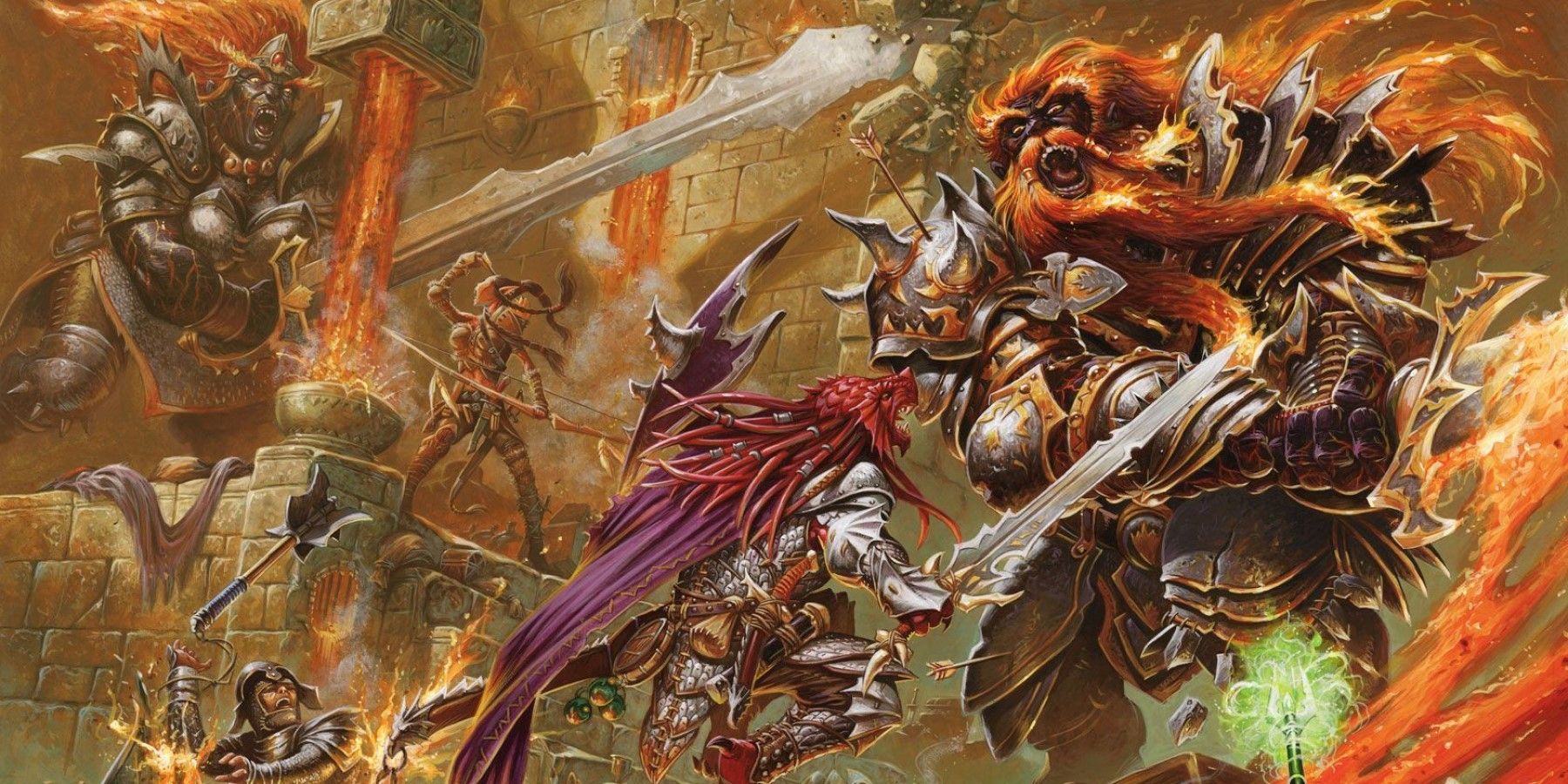
Dungeons and Dragons: Everything You Need to Know About Fighting Styles
Fighting Styles are one of the most important choices for martial classes in Dungeons and Dragons Fifth Edition, and can often define a build.
Taking the Fighting Initiate feat allows a character to take one more fighting style, such as archery, dueling, or great weapon fighting. Having access to more fighting styles can open the door for more versatility while in combat, giving players a plethora of new options to prevent combat from growing too stale.
8 Dual Wielder
Wield Two Weapons At Once
- Gain a +1 bonus to AC while wielding a separate melee weapon in each hand.
- Use two-weapon fighting even when the one-handed melee weapons being wielded aren't light.
- Draw or stow two one-handed weapons when players would normally be able to draw or stow only one.
There is only one thing better than having a sword in one's hand — and that's having two. While some classes already come equipped with the ability to dual-wield weapons, the feat Dual Wielder (Player's Handbook, page 165) gives players bonuses when fighting with a separate weapon in each hand.
Specifically, this feat provides a bonus to AC, the ability to wield two weapons that don't have the Light property, and the ability draw or sheathe two weapons simultaneously instead of just one. With all these features, this versatile feat is sure to give Fighters a boost in combat.
7 Slasher
Allows Players To Debuff Enemies
- Increase Strength or Dexterity by 1 (to a maximum of 20).
- Once per turn, when players hit a creature with an attack that deals slashing damage, they can reduce the speed of the target by 10 feet until the start of their next turn.
- When players score a critical hit that deals slashing damage to a creature, they grievously wound it. Until the start of their next turn, the target has disadvantage on all attack rolls.
Introduced in the supplement book Tasha's Cauldron of Everything, Slasher is another great feat to introduce to the Fighter class. It has multiple benefits that affect the stats of the user, as well as ways to handicap enemies during combat.
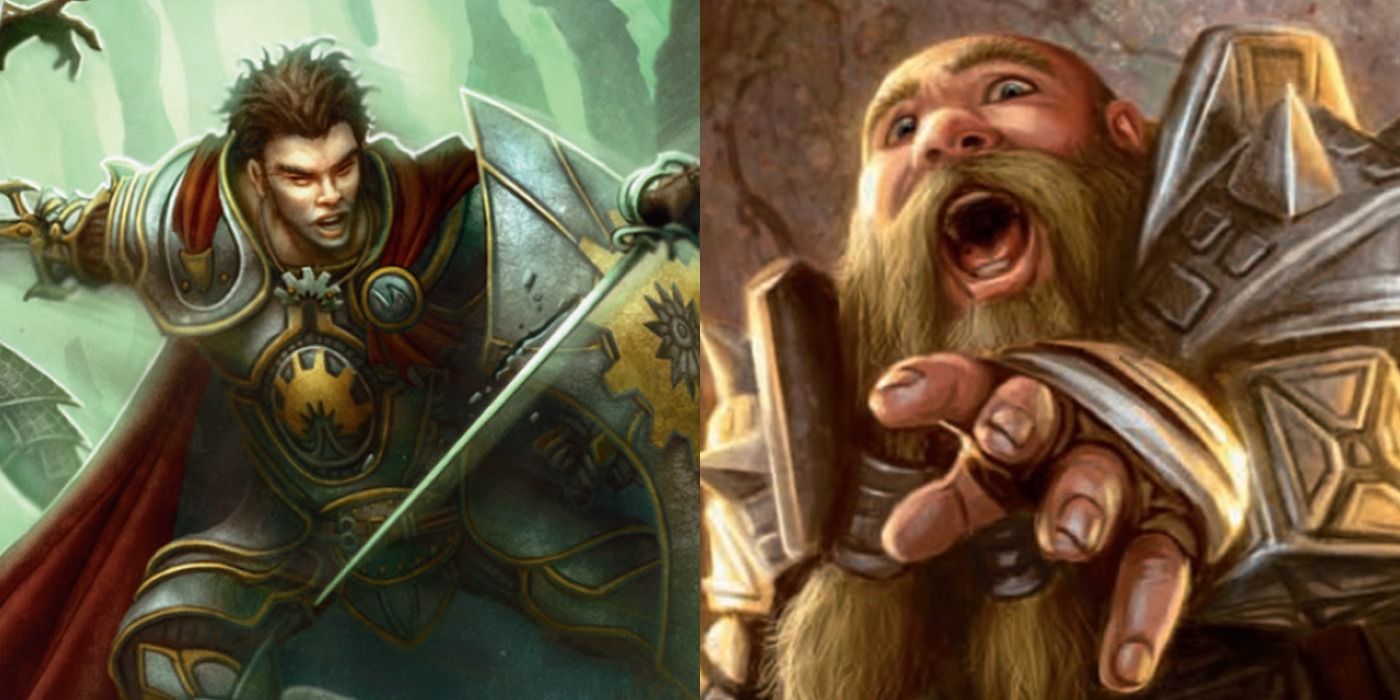
Feats That Make Dungeons & Dragons 5e Too Easy
Dungeons & Dragons players would do well to pick these feats if they want their tabletop gaming experience to be such a breeze.
The additional damage and other effects it inflicts gives the Fighter an edge in combat as they can reduce their movement and even their prowess in battle. For these effects alone, every Fighter should look into making this feat a priority.
6 Great Weapon Master
Grants Access To Additional Attacks
- On their turn, when the player scores a critical hit with a melee weapon or reduces a creature to 0 hit points with one, they can make one melee weapon attack as a bonus action.
- Before they make a melee attack with a heavy weapon they are proficient with, players can choose to take a -5 penalty to the attack roll. If the attack hits, they add +10 to the attack's damage.
Great Weapon Master is a must-have for those looking to hit hard and fast. It grants bonuses to those who wield weapons that have the Heavy property, such as greataxes or greatswords. It makes rolling that d20 an even more monumental occasion.
Instead of just dealing double damage on a crit, the Great Weapons Master feat grants the wielder an additional attack using a bonus action, giving the player the option to bag the kill and the glory that comes with it. The player also has the option to suffer a -5 on their attack rolls to gain an additional 10 damage on successful attacks, making for a high-risk, high-reward play that can make for some truly epic moments in combat.
5 Sentinel
Stop A Foe In Their Tracks
- When players hit a creature with an opportunity attack, the target's speed becomes 0 for the rest of the turn.
- Creatures provoke opportunity attacks even if they take the Disengage action before leaving the Fighter's reach.
- When a creature within 5 feet of them makes an attack against a target other than the player (and that target doesn't have this feat), they can use the reaction to make a melee weapon attack against the attacking creature.
The Sentinel feat allows Fighters to protect their allies by attacking enemies who flee from their reach. Sentinels can successfully stop a creature in their tracks by making their target's movement drop to 0 on an attack that connects. The feat also gives the user other benefits to make sure that no one escapes a skirmish alive against this Fighter.
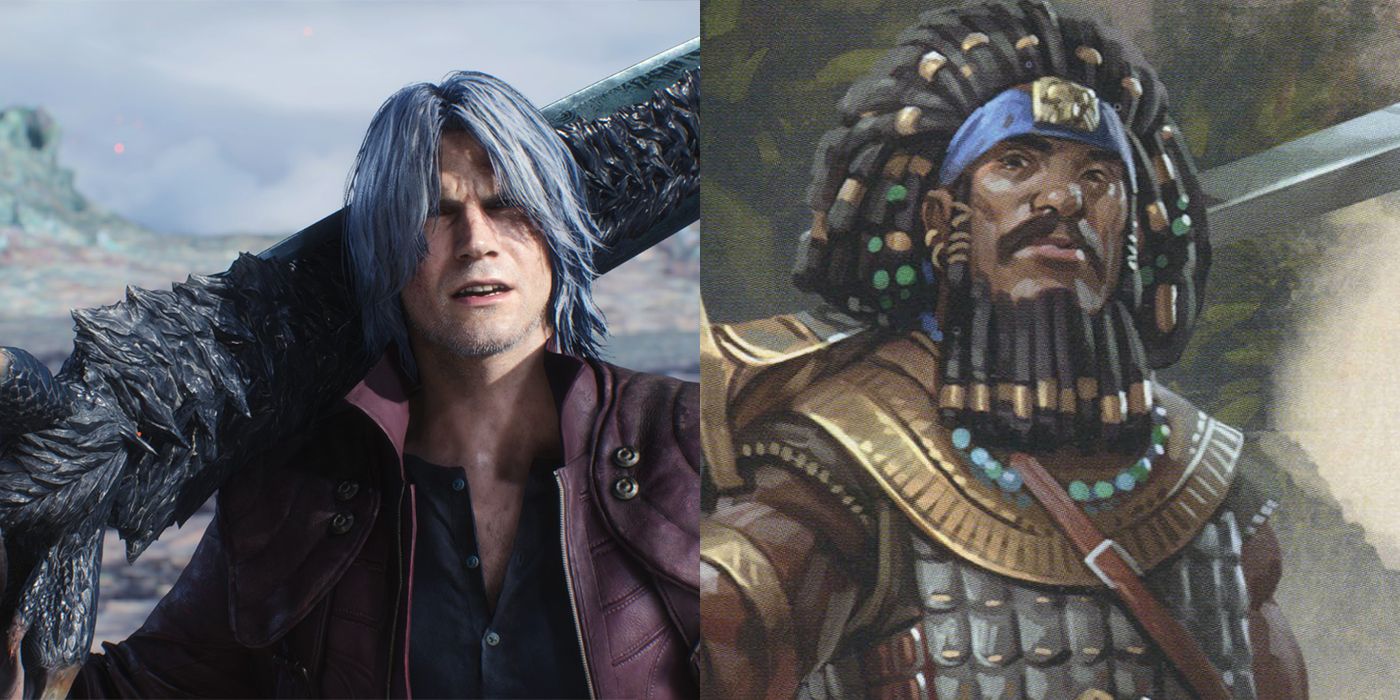
Dungeons & Dragons: Fighters In Gaming And Their D&D Builds
Want to add a touch of Devil May Cry or God of War to Dungeons & Dragons? Then here is how to build 10 popular fighter characters from gaming.
Whereas the disengage action could allow foes to slink away avoiding taking an attack of opportunity, the Sentinel feat isn't going to make it so easy for them. For Fighters that want to be the shield between enemies and their friends, Sentinel is definitely the feat for them.
4 Savage Attacker
Reroll And Maximize Damage Output
- Once per turn when the player rolls damage for a melee weapon attack, they can reroll the weapon's damage dice and use either total.
For Fighters who want to cut loose and put some more force behind their attacks, Savage Attacker is the feat for them. Though the feat has fewer abilities than some others, it is still worth considering for Fighters who value strength above all else.
Savage Attacker allows the user to reroll their damage dice and use the damage total of their choosing upon every turn, ensuring they can maximize their damage output.
3 Gunner
Bring Guns To A Sword Fight And Deal Damage From A Distance
- Increase Dexterity score 1 (to a maximum of 20).
- Gain proficiency with firearms (see "Firearms" in the Dungeon Master's Guide).
- Ignore the loading property of firearms.
- Being within 5 feet of a hostile creature doesn't impose disadvantage on the character's ranged attack rolls.
For Fighter PCs who want to try their hand at the Gunslinger subclass, Gunner is a must-have feat. By choosing it, Gunslingers get an increase to their Dexterity score and gain proficiency with firearms. (This aspect will only benefit players who didn't choose Gunslinger as a subclass since the subclass gains this proficiency at level 3.)
They can also ignore the Loading property to allow for more fluid attacks in combat, as well as ignoring the disadvantage that would have been imposed on their attack if they were within melee range of an enemy. The diversity of this feat makes this an essential one for Gunslinger Fighters in D&D.
2 Knight Of The Crown
Use Allies To Strike Harder
- Increase Strength, Dexterity, or Constitution by 1 (to a maximum of 20).
- Commanding Rally: As a bonus action, players can command one ally within 30 feet to attack. If that ally can see or hear them, they can immediately make one weapon attack as a reaction. If the attack hits, the ally can roll a d8 and add the number rolled as a bonus to the attack's damage roll.
This feat offers generous benefits, but the player must create a character with the Squire of Solomnia feat before they can choose which Knight Order they take. There are three in total, but the Order of the Crown is the most basic and also the most useful.
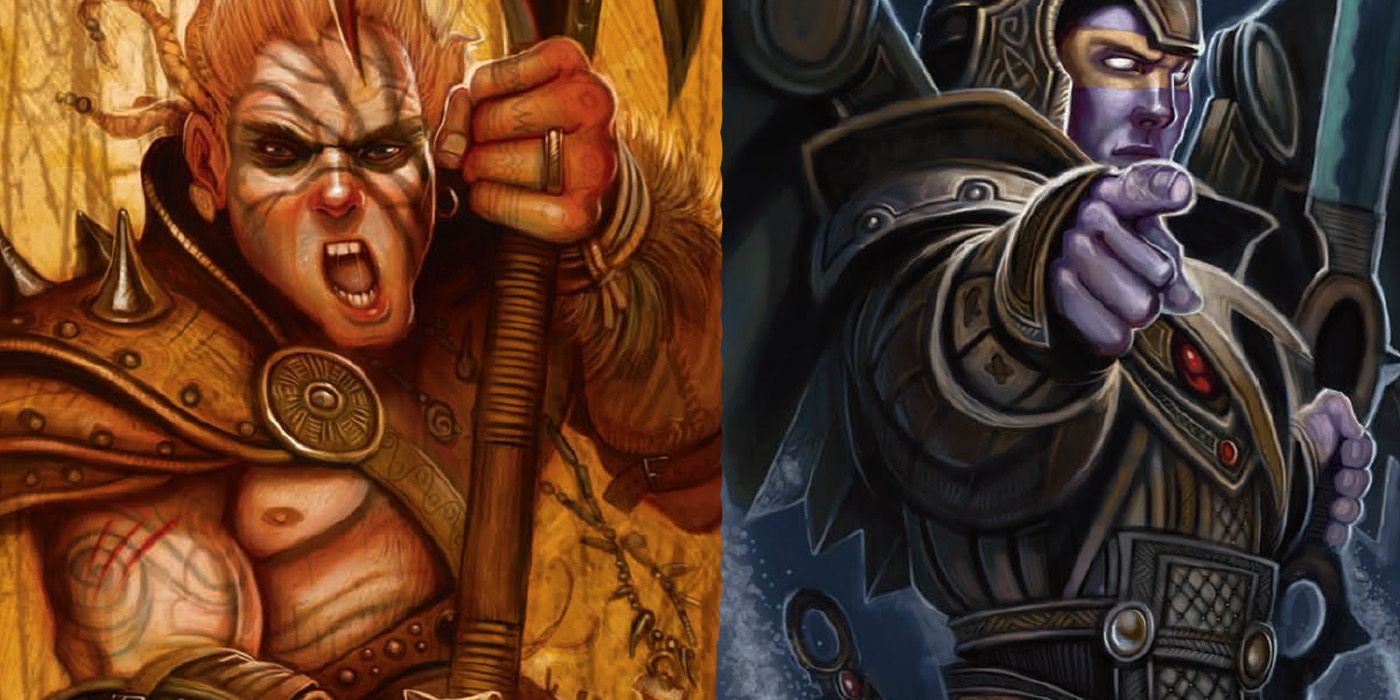
Dungeons & Dragons: Must-Get Battle Master Maneuvers
Playing a Fighter in Dungeons and Dragons comes with few caveats. However, playing a Battle Master well requires picking the right maneuvers.
Knights of the Crown increases the player's choice of one ability score, and allows them to command an ally within 30 feet to use their reaction to attack with a bonus to the damage dealt. Knights of the Crown can use this ability multiple times per day, up to their proficiency bonus, which makes this feat a strong choice for Fighters.
1 Squire Of Solamnia
Dish Out Additional Damage
- Mounting or dismounting costs only 5 feet of movement.
- Once per turn, when the player makes a weapon attack roll against a creature, they can cause the attack roll to have advantage. If the attack hits, they roll a d8 and add the number rolled as a bonus to the attack's damage roll. They can use this benefit a number of times equal to their proficiency bonus, and a use is expended only if the attack hits.
Of course, in order to become one of the above-mentioned knights, a character must first serve as a squire. Even as a lowly squire, the player will still gain a few advantages to give them an edge.
Versed in mounted combat, mounting or dismounting costs only 5 feet of movement, and those with this feat also gain combat advantages. Just like the knight orders, Squires of Solamnia gain an additional d8 bonus damage to attacks that hit. This ability can be used up to their proficiency bonus, but a use is only expended for successful attacks. The main draw of this feat is that players then gain access to the Knight Orders.
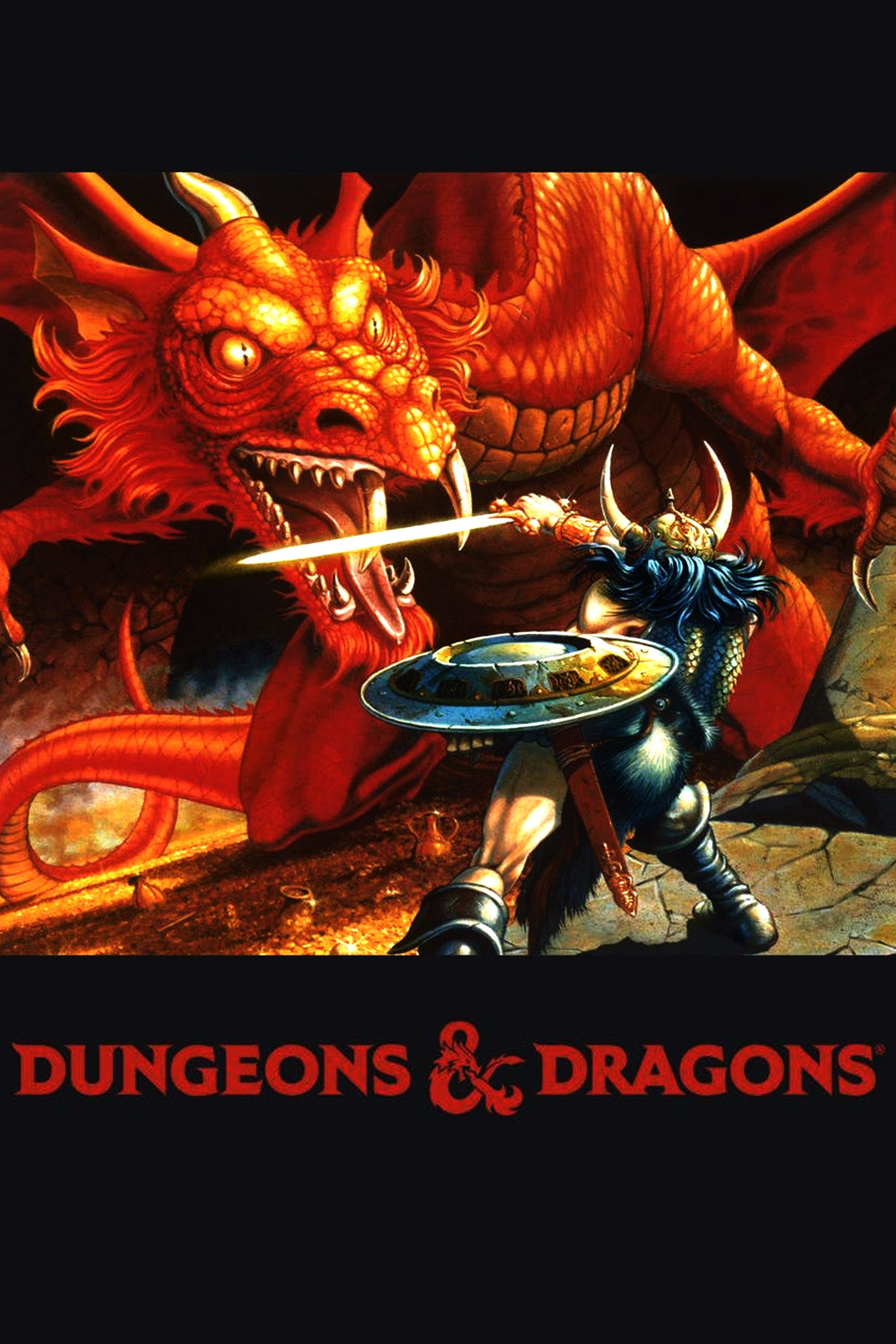
Dungeons and Dragons
- Original Release Date
- 1974-00-00
- Publisher
- Wizards of the Coast
- Designer
- E. Gary Gygax , Dave Arneson

